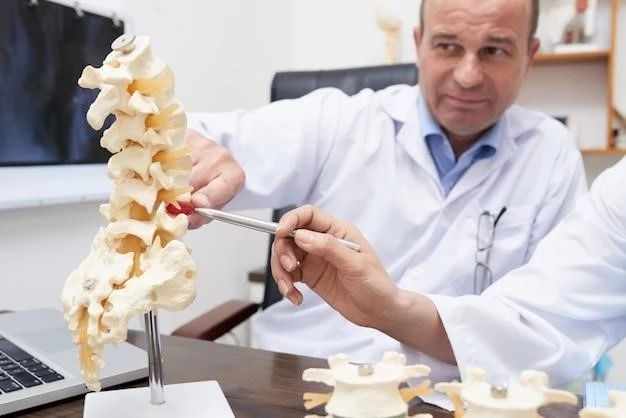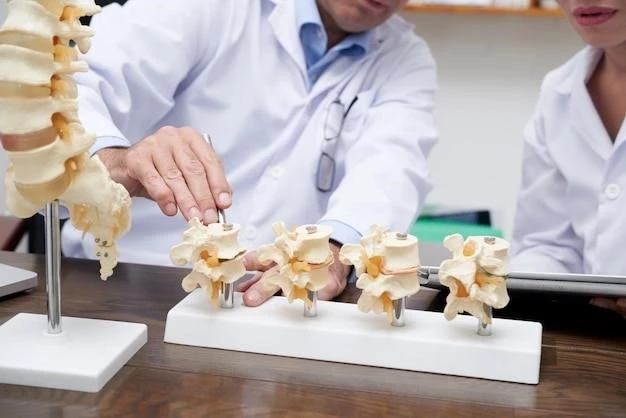Introduction to Proximal Spinal Muscular Atrophy (SMA)
Spinal muscular atrophy (SMA) is characterized by muscle weakness and atrophy from progressive degeneration of motor neurons. The condition presents with symmetrical, progressive proximal muscle weakness and affects individuals from birth to adulthood.
Overview of SMA
Spinal muscular atrophy (SMA) is a neurodegenerative disorder characterized by progressive muscle weakness and atrophy due to the degeneration of lower motor neurons in the spinal cord. SMA can manifest from infancy to adulthood, impacting the ability to perform motor functions. Genetic mutations, specifically in the SMN1 gene, play a central role in the development of SMA.
Genetic Basis of SMA
Spinal muscular atrophy (SMA) is primarily caused by mutations in the SMN1 gene, responsible for encoding the survival motor neuron protein. These mutations disrupt motor neuron function, leading to the progressive degeneration and loss of muscle-controlling neurons in the spinal cord. The genetic defects associated with SMA can vary, affecting individuals across different types of SMA with varying severity and onset.
Clinical Presentation and Symptoms
Spinal muscular atrophy (SMA) clinically presents with progressive muscle weakness and atrophy, mainly affecting proximal muscles. Patients may also experience respiratory complications due to muscle degeneration, leading to breathing difficulties. The onset and severity of symptoms can vary from infancy to adulthood, impacting motor function and overall quality of life.
Muscle Weakness and Atrophy
Spinal muscular atrophy (SMA) primarily manifests with progressive weakness and atrophy of proximal muscles, impacting motor functions. The condition results from degeneration and loss of lower motor neurons in the spinal cord, leading to symmetrical and progressive muscle weakness. SMA can have varying onset times and severity levels, affecting individuals across different age groups.
Respiratory Complications
Spinal muscular atrophy (SMA) can lead to respiratory complications due to the progressive muscle weakness and atrophy affecting the chest muscles required for breathing. Patients with SMA may experience difficulties in breathing and maintaining adequate ventilation, requiring respiratory support to manage these complications effectively. Regular monitoring and intervention are crucial to address respiratory issues in individuals with SMA.

Diagnosis and Differential Diagnosis
Diagnostic evaluation of proximal spinal muscular atrophy (SMA) often involves comprehensive clinical assessments, genetic testing to identify mutations in the SMN1 gene, electromyography studies, and imaging studies to assess muscle and nerve function. Differential diagnosis may include distinguishing SMA from other neuromuscular conditions such as amyotrophic lateral sclerosis and congenital muscular dystrophies.
Diagnostic Methods for SMA
Proximal spinal muscular atrophy (SMA) is diagnosed using various methods, including genetic testing to identify mutations in the SMN1 gene, electromyography studies to evaluate muscle function, imaging studies to assess nerve health, and clinical assessments. These diagnostic approaches help distinguish SMA from other neuromuscular conditions and guide treatment decisions.
Distinguishing SMA from Other Conditions
Proximal spinal muscular atrophy (SMA) is differentiated from other neuromuscular conditions based on clinical assessments, genetic testing targeting the SMN1 gene, electromyography studies, and imaging techniques evaluating muscle and nerve function. Distinguishing features include the symmetrical and progressive nature of muscle weakness, the age of onset, and specific genetic mutations associated with SMA compared to other disorders.
Treatment strategies for proximal spinal muscular atrophy (SMA) involve a multidisciplinary approach focusing on managing symptoms, promoting mobility, and addressing respiratory complications. Current treatments may include supportive care, physical therapy, assistive devices, and emerging therapeutic interventions aimed at targeting the genetic basis of SMA to slow disease progression.

Treatment Approaches
Current treatment options for proximal spinal muscular atrophy (SMA) involve a multidisciplinary approach that focuses on managing symptoms, promoting mobility, and addressing respiratory complications. These treatment modalities include supportive care, physical therapy, assistive devices, and emerging therapeutic interventions targeting the genetic basis of SMA to slow disease progression.
Therapeutic Advances and Research
Ongoing research in proximal spinal muscular atrophy (SMA) has led to significant therapeutic advances, including targeted treatments addressing the survival motor neuron (SMN) protein deficiency. These advancements aim to slow disease progression, improve motor function, and enhance the quality of life for individuals with SMA. Continual research efforts focus on developing novel therapies and optimizing existing treatment modalities to better manage the condition.
Disease Progression and Prognosis
Proximal spinal muscular atrophy (SMA) leads to symmetrical muscle weakness and progressive atrophy, primarily affecting proximal muscles. Respiratory complications may arise due to muscle degeneration, impacting breathing. The disease progression varies, and prognosis depends on individual factors and treatment outcomes.
Impact on Motor Neurons and Muscles
Proximal spinal muscular atrophy (SMA) results in the degeneration of motor neurons in the spinal cord, leading to progressive muscle weakness and atrophy, primarily affecting proximal muscles. The loss of motor neurons disrupts muscle function, causing symmetrical weakness and impacting motor abilities. Respiratory complications can further complicate the disease progression.
Long-Term Outlook for Patients with SMA
Proximal spinal muscular atrophy (SMA) leads to progressive muscle weakness and atrophy, primarily affecting proximal muscles. The long-term prognosis and disease progression can vary depending on individual responses to treatment, genetic factors, and the management of respiratory complications. Continuous monitoring and advancements in therapeutic approaches play crucial roles in improving the outlook for patients with SMA.
The classification of proximal spinal muscular atrophy (SMA) includes various subtypes such as infantile SMA (Type 1)٫ juvenile-onset٫ and adult-onset SMA. The diverse classification reflects differences in age of onset٫ severity٫ and progression of the disease. Each subtype presents unique challenges in management and treatment approaches.
Infantile (Type 1) SMA is a severe form characterized by symptoms appearing in the first months of life, leading to profound muscle weakness and challenges in motor function. This subtype typically presents with significant respiratory involvement and poses a considerable impact on the affected infant’s quality of life and long-term prognosis.
Types and Classification of SMA
Infantile (Type 1) SMA manifests with severe symptoms in early infancy, leading to significant muscle weakness and respiratory complications. In contrast, juvenile and adult-onset SMA present with varying ages of onset and levels of disease severity, impacting motor function and quality of life differently.
Genetic Mutations and Causes
The genetic mutations leading to proximal spinal muscular atrophy (SMA) are predominantly linked to alterations in the SMN1 gene, impacting the survival motor neuron protein production. These genetic aberrations trigger the degeneration of motor neurons in the spinal cord, resulting in progressive muscle weakness and atrophy, with varying clinical manifestations across different SMA subtypes.
Role of SMN1 Gene in SMA
The proximal spinal muscular atrophy (SMA) is primarily influenced by mutations in the SMN1 gene, which encodes the survival motor neuron protein essential for motor neuron function. These genetic alterations play a critical role in the degeneration of motor neurons in the spinal cord, leading to progressive muscle weakness and atrophy seen in SMA patients across different subtypes.
Hereditary and Random Mutations in SMA
Proximal spinal muscular atrophy (SMA) arises from a combination of hereditary and sporadic mutations, primarily affecting the survival motor neuron 1 (SMN1) gene. While some cases result from inherited genetic alterations passed down from parents٫ others occur randomly during cell division or due to environmental factors; These mutations contribute to the pathogenesis of SMA and the associated motor neuron degeneration.
Challenges and Opportunities in SMA Research
Ongoing research in proximal spinal muscular atrophy (SMA) faces challenges such as understanding the complex genetic mutations, disease progression, and developing effective treatments. However, opportunities exist to advance knowledge through innovative therapies, genetic studies, and improved clinical management, providing hope for improved outcomes and quality of life for individuals with SMA.
Unresolved Issues in SMA Therapeutics
Several unresolved issues in proximal spinal muscular atrophy (SMA) therapeutics persist, including the complexity of genetic mutations, varying disease progression rates, and challenges in developing universally effective treatments. Addressing these issues requires continued research, innovative therapeutic strategies, and personalized approaches to improve outcomes for individuals affected by SMA.
Need for Further Research and Data Analysis
Continued research and comprehensive data analysis are imperative in advancing the understanding of proximal spinal muscular atrophy (SMA). Further investigations are crucial to elucidate the complex genetic factors, disease progression mechanisms, and treatment efficacy, paving the way for enhanced therapies and improved outcomes for individuals affected by SMA.
